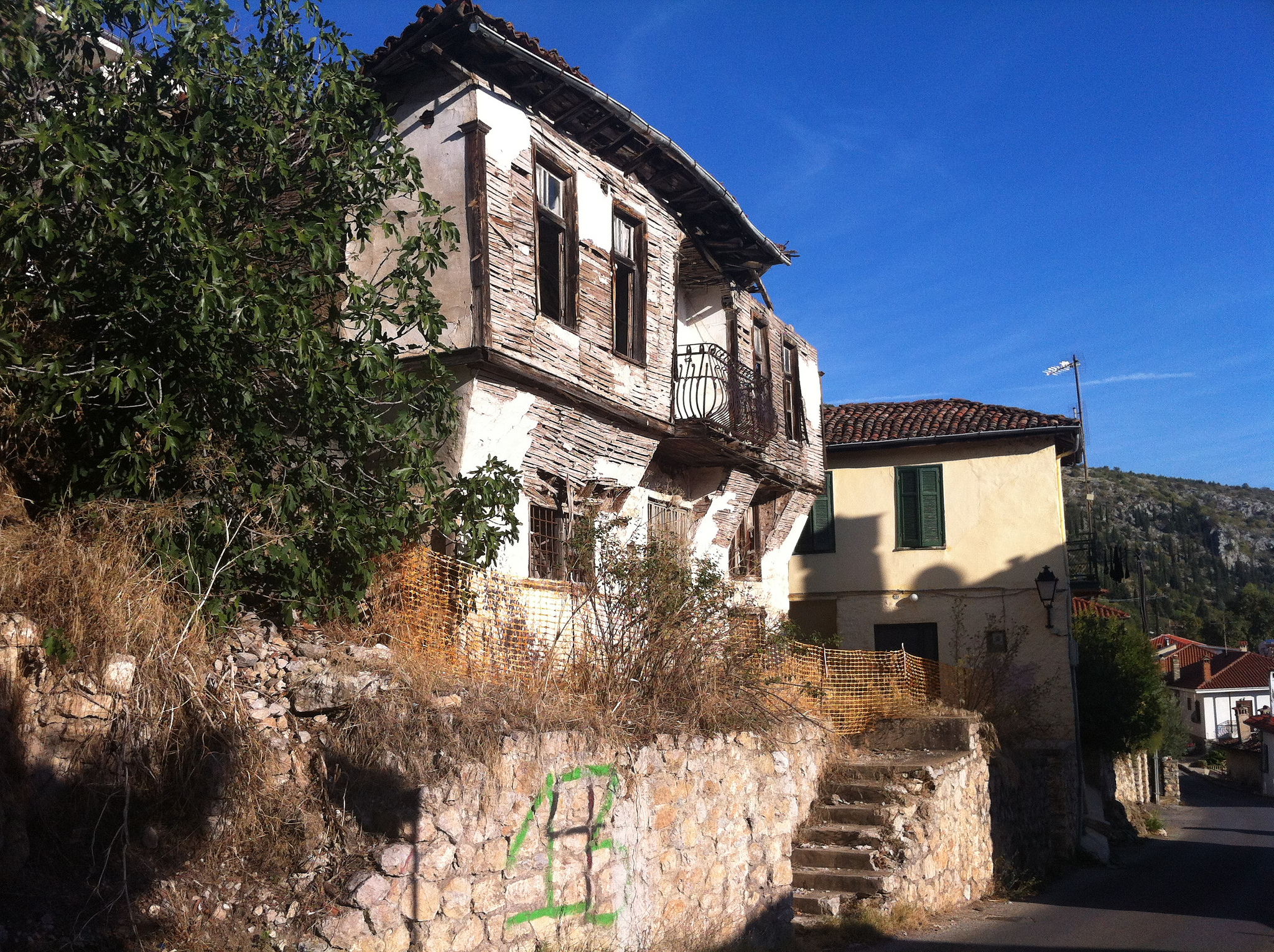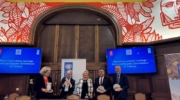Greece: European heritage and financial experts made second visit to Kastoria
On 5-7 November, a delegation of heritage and financial experts from Europa Nostra and the Council of Europe Development Bank (CEB) made a second visit to the historic neighbourhoods of Dolcho and Apozari in Kastoria, Greece, listed among ‘The 7 Most Endangered’ heritage sites in Europe in 2014. Building on the findings of the first mission held on 4-5 October and on the additional technical material provided by the Municipality of Kastoria, this second visit represented an important step forward towards the revitalisation of these historic quarters.
Costa Carras, Vice-president of Europa Nostra, Ioanna Steriotou and Pedro Ponce de Léon, Members of the Scientific Council of Europa Nostra, and José Alonso, technical expert, took part in this mission. Pedro Ponce de Léon, who is leading the preparation of a technical and financial report, funded by the Council of Europe Development Bank through the Spanish Social Cohesion Account, also acted on behalf of CEB.
The visit featured a tour to relevant quarters of the old city, namely to the neighbourhoods of Apozari (where the Sapountzi mansion is located), Dolcho (where the Bassara mansion is being restored), and Medrese, a unique Ottoman monument, and to the area of the walls near the Town Hall. The aim was to develop a complete understanding of the traditional community, its problems and actions that have already been taken. The working group also visited important monuments, such as the Byzantine churches of the Archangel Cathedral of Our Holy Lady of Koubelidiki, St. Stephen and St. Anargyron, as well as the Aivazi mansion, where the Folklore Museum of Kastoria is headquartered.
The European delegation met with the heads of local and regional bodies in order to identify potential problems and ensure greater coordination between the various stakeholders.
The key issues discussed at the meetings with the Ephorate of Antiquities of Kastoria and the Municipal Urban Planning Office were the procedures for approval of studies and projects of restoration of monuments as well as the issuing of permits for listed buildings, particularly for the newly listed buildings in the neighbourhoods of Dolcho and Apozari, the majority of which belong to private owners. One positive remark is that the Municipality has the legal capacity to repair roofs and facades of the newly listed buildings.
The three-day visit ended with a meeting at the headquarters of the Regional Unit of Kastoria, chaired by Sotiris Adamopoulos, Vice-Regional Governor, and attended by L. Papadimitriou, Alderman for Culture, advisors and other actors in charge from Kastoria and the Region of Western Macedonia, and the European delegates.
Pedro Ponce de Léon and José Alonso mentioned the need for solving the bureaucracy problems that can cause significant delays in the completion of the approval procedures. They have also testified that except for the technocratic solutions that they will propose, their own effort is to explore the possibility of redevelopment of the residential areas around the churches in the neighbourhoods of Dolcho and Apozari.
Ioanna Steriotou highlighted the excellent cooperation between the representative committee and the services in charge, in order to understand the parameters of the program and to collect all the necessary data.
Costa Carras stated that the restoration of the roofs and facades of buildings in the neighbourhood of the Apostles is a positive example of the corresponding implementation plan, but stressed that this needs to be completed with the restoration of the interiors. He also emphasized that the definition of new uses in restored buildings is of vital importance.
L. Papadimitriou stressed the need of establishing a Local Office that will bring together all the responsibilities of the Ministries involved, so that plans and projects can be approved in the shortest period of time possible.
Sotiris Adamopoulos recognised the great responsibility towards the local community for the rescue and promotion of cultural heritage. The Vice-Regional Governor pointed out that culture and tourism are included in the priorities of the new Operational Program of Western Macedonia Region and that Kastoria represents the best example of a city in the region that can benefit from it.
Lastly, the involvement of engineers, members of the Technical Chamber of Greece – Department of Western Macedonia, should be taken for granted, according to their representative, Paraskevi Christopoulou.
The delegate acting on behalf of the Council of Europe Development Bank asked for supplementary material of listed properties in the two neighbourhoods to be dispatched as soon as possible, in order to allow the presentation of concrete proposals over the next two months.
The main goal is to make haste towards rescuing and regenerating the old city of Kastoria, while finding new uses for many of the old buildings.







